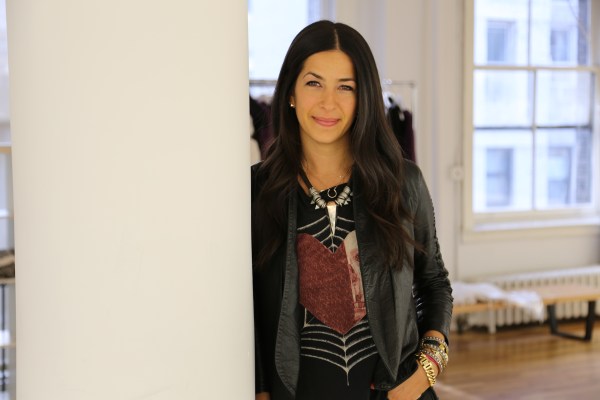Not only is augmented reality helping us capture all the Pokémon, it’s also made its way to Rebecca Minkoff’s fall preview show at Fashion Week this Saturday.
About 350 fashion-forward individuals will get an up-close look at the new line in person, but those not able to snag a ticket can feel like they are right there with a 360 live experience provided at the show. And, something even more telling of where the fashion industry is headed — they’ll also be able to see how Minkoff’s newest line looks on their own body using an app called Zeekit.
Minkoff and her brother/co-founder Uri Minkoff partnered with the startup to help real women connect with the brand. It works by uploading a photo of yourself and then picking out clothing items from the show. Zeekit will then overlay those items on your body using the size you choose.
So instead of mentally noting how a certain item would look on you instead of that lanky model, you can see it in augmented reality and in your size.
The brother-sister duo has used tech to connect with its audience at past shows, like drones and VR, and the latest experience is an outgrowth of what’s worked to bring in consumers. But Uri, who recently caught up with me via phone, also says it’s a way to keep up with women in a new tech-savvy era of fashion to improve his brand’s bottom line — particularly with reduction of returns.
“The industry standard for returns is 20 percent to 40 percent,” he told me. Zeekit could help reduce headaches by more accurately predicting which size dress or slacks look best on your body.
But Rebecca Minkoff’s show isn’t the only one integrating tech. Thanks to fashion bloggers and the rise of social media, items once kept close for months at a time by designers and fashion editors are readily available to see — and buy.
More brands like Minkoff and Hilfiger are now selling items seen on the runway that day, and other lines like Noon by Noor, Band of Outsiders, Prabal Gurung and others have also hopped on the VR bandwagon to introduce the latest to armchair fashion fans, as well.
But Uri says tech has also changed the habits of a younger generation of buyers. It’s an Instagram era, and young women are staging their own fashion shows now. We’re seeing more diversity in the industry and real women on magazines. They’re not buying if they think the fashion is made for lanky models and not them.
Integration of VR and augmented reality apps like Zeekit enable real women to see themselves in the clothing, not just runway models, and Uri believes the app could help boost buyer confidence in his brand. It’s a way to make his line accessible to every woman, not just a five-foot-ten-inch, bone-thin model.
“I think that will then take away some of the elite nature and exclusivity that has been part of fashion and bring it to a more real place that will further spark interest in relatability,” Uri said.
